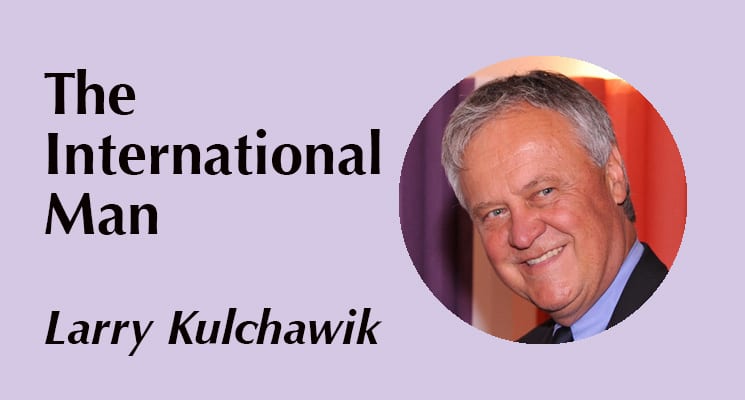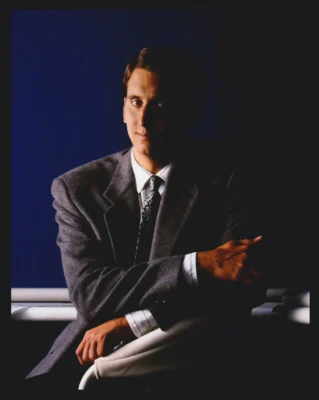by Larry Kulchawik
After 45 years of doing trade show and event stuff, I think back about some of the missteps I have taken along my international journey. I have often stated that none of us in our industry have gone to school to learn what we do. We learned to be experts by trial and error and learned quickly to avoid making the same mistakes twice.
Many of the show site details we have learned about U.S. show regulations, shipping to show site, or site installation have at one time or another been an issue in our assumptions for correctness. Each of accumulated experiences at a show site helped us to become the experts we now claim to be. Exhibiting internationally also requires that we accumulate experiences to be certain that our on-site expectations are a reality. With these learning experiences, we slowly become an expert. But the truth is, we never stop learning and always uncover a new wrinkle along the way. It often becomes an issue of learning “what not to do” vs. |what to do.”
I would need 600 pages to share all the mistakes I have made doing international tradeshows. Finding a local partner to trust might be rule number one. Here are a few of the missteps I made along my international journeys. We learn from experience-sometimes the hard way!
Chicago Mercantile Exchange/London: CME introduced the first electronic trading in the U.S. called Globex. We designed a sophisticated exhibit to launch Globex in the USA. They then decided to send this same exhibit to London to introduce to Europe. Things I should have known or been advised of:
1. Shipping a crated exhibit to Europe was quite expensive.
2. Event was on the second floor of an old hotel in London. Its elevator was only 2m high so the exhibit needed to be cut down to fit in the elevator. No place to store the crates, so trucked away and returned after the event.
3. All the sophisticated electronics build into the exhibits were not compatible with European electric. In the end, all worked well but the miscalculations proved very costly.
Jasco/Munich: A Japanese company introduced their new testing equipment at an event in Orlando. Specialized display counters were built to support the many pieces of equipment shown and the unique exhibit design was a branding look they wanted to keep when marketing internationally. They wanted to ship the exhibit from Orlando to Munich and then to Tokyo for a three-show introduction. Air shipping (40) crates of exhibit material was the only way to meet the tight timeline between events. Shipping the crated exhibit to Munich required that the crates be “bombed.” The crates were shipped to Miami to be placed under a tent and then smoke bombed to kill any bugs in the wooded crates.
For the European exhibit, the local distributors asked that there be a raised floor, a bar area and a private meeting room designed into the exhibit. Since the space was too small to accommodate everything, an additional exhibit space was rented across the aisle of the main send. In the end, branding look was achieved, but a very costly solution to get there! Conclusion for both CME & Jasco…It would have been cheaper to have duplicated the exhibit in Europe to meet local standards and expectations.
Exhibitgroup/Milan: In my role as director of international at Exhibitgroup in the early ‘90s, I was persuaded to participate in a European trade fair called The Great April Fair in Milan, Italy. This was at the old Milan Fairgrounds before the new exhibit center was erected. The event was attended by more than 3 million people over a one-week time period. The event attracted exhibitors from all sorts of industries: food, agriculture, consumer electrics, hardware, clothing and marketing services. What a dumb mistake to determine that the number of overall people attending was more important than the number of qualified people attending. Add to this that attendees did not wear name badges. Visitors paid admission to get in, just like attending an auto or sports show in the U.S. The Italian government assured us that they would sort out their attendees and they would make appointments for us to meet those interested in tradeshow marketing. Our time meeting people at the space (who spoke English) was spent answering the question, “Now, what is it that you do?” The following year we attended EuroShop—now that was a qualified market!
Conclusion: Be fully aware of the quality of the visitors who attend a show that you elect to exhibit. What are the characteristics of a qualified buyer? Duh! Making mistakes is all a part of the learning experience when exhibiting internationally. Mistakes made at global events can often be more costly than shows in the your home region. Taking the time to fully investigate a venue, their work rules, their regulations, and their expectations in a world region will surely help to avoid costly surprises at a show site. Lastly, work with a trusted partner, they know their home court better than you.
Larry Kulchawik is the head of Larry Kulchwawik Consulting and author of Trade Shows from One Country to the Next. For more info, visit www.larrykulchawik.com
This story originally appeared in the March/April issue of Exhibit City News, p. 22. For original layout, visit https://issuu.com/exhibitcitynews/docs/ecn_flipbook_marchapril2019?e=16962537/67925242






























